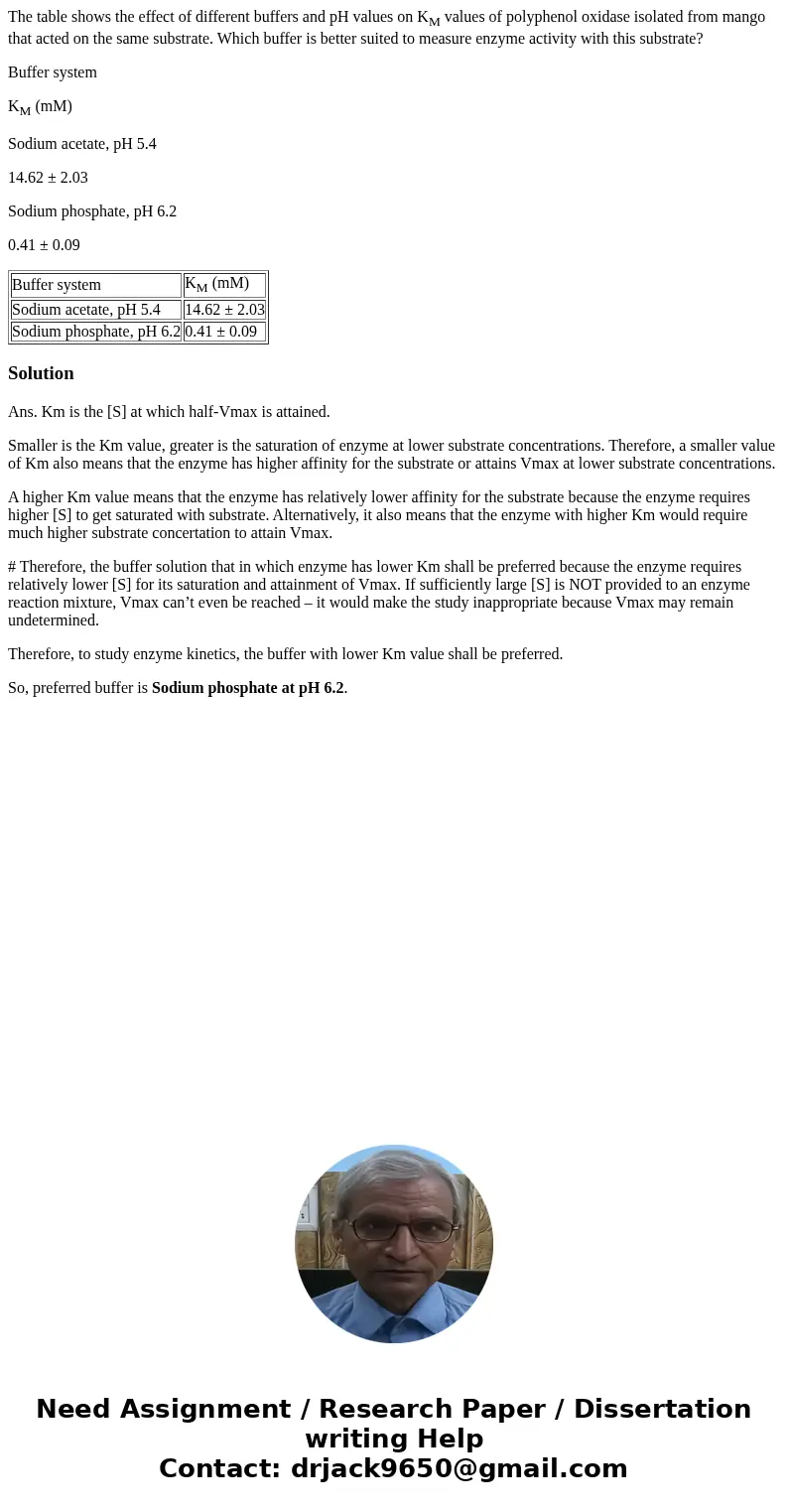The table shows the effect of different buffers and pH value
The table shows the effect of different buffers and pH values on KM values of polyphenol oxidase isolated from mango that acted on the same substrate. Which buffer is better suited to measure enzyme activity with this substrate?
Buffer system
KM (mM)
Sodium acetate, pH 5.4
14.62 ± 2.03
Sodium phosphate, pH 6.2
0.41 ± 0.09
| Buffer system | KM (mM) |
| Sodium acetate, pH 5.4 | 14.62 ± 2.03 |
| Sodium phosphate, pH 6.2 | 0.41 ± 0.09 |
Solution
Ans. Km is the [S] at which half-Vmax is attained.
Smaller is the Km value, greater is the saturation of enzyme at lower substrate concentrations. Therefore, a smaller value of Km also means that the enzyme has higher affinity for the substrate or attains Vmax at lower substrate concentrations.
A higher Km value means that the enzyme has relatively lower affinity for the substrate because the enzyme requires higher [S] to get saturated with substrate. Alternatively, it also means that the enzyme with higher Km would require much higher substrate concertation to attain Vmax.
# Therefore, the buffer solution that in which enzyme has lower Km shall be preferred because the enzyme requires relatively lower [S] for its saturation and attainment of Vmax. If sufficiently large [S] is NOT provided to an enzyme reaction mixture, Vmax can’t even be reached – it would make the study inappropriate because Vmax may remain undetermined.
Therefore, to study enzyme kinetics, the buffer with lower Km value shall be preferred.
So, preferred buffer is Sodium phosphate at pH 6.2.

 Homework Sourse
Homework Sourse